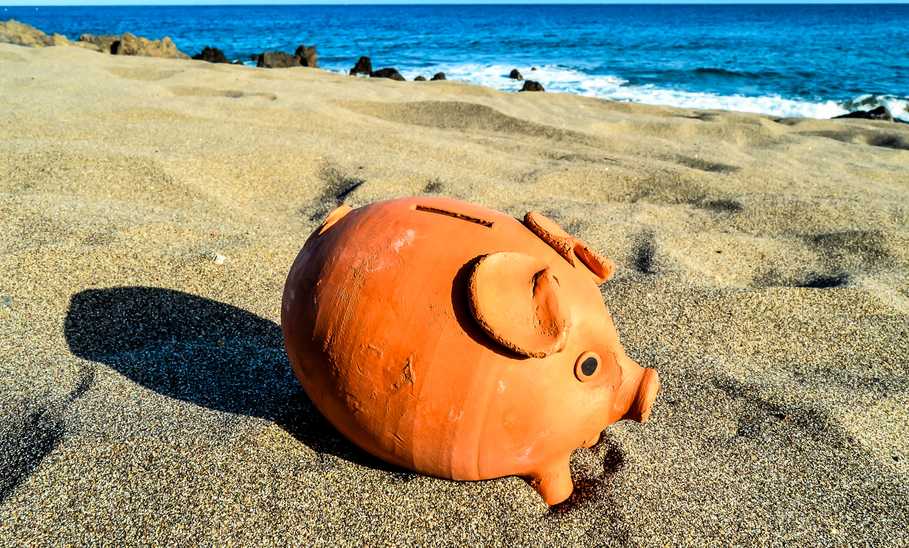- No account fees for checking and savings accounts.
- Earn well above the industry average interest rate.
- Handle banking, investments, and loans at a single financial institution.
Best Banks in California in 2024

Our evaluations and opinions are not influenced by our advertising relationships, but we may earn a commission from our partners’ links. This content is created by TIME Stamped, under TIME’s direction and produced in accordance with TIME’s editorial guidelines and overseen by TIME’s editorial staff. Learn more about it.
Whether in California or Kalamazoo, a good bank should provide competitive financial products alongside top-notch customer service. However, even when you find one that does that, it may not offer the right combination of accounts, rates, fees, and service for you. To jumpstart your bank hunt, check out this list of California’s best banks in 2024.
| Bank/Institution | Best for | Account types | Checking account bonus/welcome offer |
|---|---|---|---|
SoFi | Online-only banking | Checking, savings, credit card, investments, personal loans, mortgage loans, and student loans | $300 with direct deposit |
Chase Bank | All banking needs from a single bank | Checking, savings, CDs, credit cards, home loans, auto loans, investments, and business banking | $300 with direct deposit |
Capital One | Online banking with occasional branch visits | Checking, savings, CDs, credit cards, auto loans, and business banking | No current bonus |
U.S. Bank | Local branches | Checking, savings, CDs, money market,credit cards, investing, personal loans, auto loans, and home loans | Up to $400 bonus with direct deposit for personal checking (offer good through April 3, 2024); also up to $800 with direct deposit for business checking (offer good through April 2, 2024) |
Chime | Low fees | Checking, savings, and a credit card | No current bonus |
Many Californians are familiar with SoFi Stadium, home of the Los Angeles Rams and Chargers. SoFi is an excellent online-only bank offering comprehensive banking, investing, and lending services. SoFi Checking and Savings accounts are good choices for someone wanting high interest rates and low fees. These may be the best high-yield checking and saving accounts on this list.
With direct deposit to a SoFi checking account, you qualify for higher interest rates on both checking and savings balances. There are no monthly fees, minimum balance requirements, overdraft fees, or ATM fees (though you may pay a fee charged by a non-affiliated ATM).
JP Morgan Chase is the largest bank in the United States and, indeed, one of the largest financial institutions in the world. It operates more than 4,700 branches, with 859 locations in California. Chase offers just about anything you may want from a bank, including a diverse array of bank accounts, investment accounts, and lending products.
Chase bank accounts tend to come with higher fees and lower interest rates than online banks, but it has excellent customer service, and odds are there is a branch near your home or office. You can avoid monthly service charges by maintaining specific minimum balance requirements.
Capital One works well as an online bank, offering extensive features and above-average interest rates for its bank accounts. It operates 278 branches and cafés in the U.S., including dozens in California. The cafés are an unusual type of bank branch that includes a coffee shop and workspace. However, most people won’t need to visit a Capital One branch to handle their banking.
360 Checking and 360 Savings are among the best bank accounts nationwide. The checking account has no fees, and you can make withdrawals at more than 70,000 ATMs with no fees. You can choose among several methods of handling overdrafts, none of which require additional charges. Customers can also add cash to their accounts at CVS and Walgreens locations, a useful feature.
Having recently merged with Union Bank to become the fifth-largest bank in California (with about 750 branches in the state), U.S. Bank now operates more than 2,000 branches in 26 states and is also the fifth-largest bank in the United States. It’s a full-service bank offering a wide range of accounts, credit cards, and loan products.
While the account offerings are diverse, as with other traditional banks that have brick-and-mortar locations, fees can be high, and interest rates are unimpressive for checking and savings accounts. Overdrafts don’t incur fees in some situations. U.S. Bank operates a sizable ATM network, but you may pay fees when using out-of-network ATMs. It could be the right choice if you’re looking for a bank with in-person customer service.
Accounts
Chime is an online-only bank offering accounts with extremely low fees. There are no monthly fees or minimum balance requirements, and you won’t pay any overdraft fees. In fact, the only fee Chime charges is for using out-of-network ATMs.
The checking and savings accounts are simple and straightforward. An unusual feature is called “Spot Me,” where Chime will cover up to $200 in overdrafts while maintaining no overdraft fees. It works with an ATM network offering more than 60,000 no-fee ATMs at Walgreens, CVS, 7-Eleven, and Circle K locations. Chime could be the best choice if you want an online account and don’t want to pay fees.
To choose the best banks in California, we reviewed a long list of institutions and their types of accounts, interest rates, and fees. We aimed to pick banks with the best combination of accounts and features for the typical customer.
This list of the best banks in California doesn’t include all possible options. The state is home to more than 100 banks and credit unions, and you can choose from a selection of online banks operating nationwide as well.
The California Department of Financial Protection and Innovation (DFPI) regulates banks in the state. Banks nationwide also fall under regulations set by the Federal Reserve and the Consumer Financial Protection Bureau.
You can find several types of banks and other financial institutions in California. Here’s a look at some of the most common.
There’s no perfect bank for everyone, but there is a best bank in California for your specific needs. Here’s what to consider when choosing a bank.
With this list of the best banks in California, you can navigate the crowded landscape and find the ideal bank for you. If you’re unhappy with your bank, changing to another can take some work, but it’s easier than many people realize and often well worth the effort.
The best bank in California depends on your specific needs. Among our favorites are Chase Bank for its large branch network and SoFi for online-only banking.
Bank of America is the largest bank in California, with nearly 25% of all deposits statewide. Chase and Wells Fargo are the second- and third-largest banks in the state. Each holds more than 10% of deposits in the state.
Virtually all banks and credit unions in the United States are backed by insurance from the Federal Deposit Insurance Corporation (FDIC). Even if the bank goes out of business, you’re guaranteed to get your money back up to the insurance limit, which is $250,000 per depositor, per bank, per ownership category. Thus, all banks are equally safe as long as your balance is under the limit.
The information presented here is created by TIME Stamped and overseen by TIME editorial staff. To learn more, see our About Us page.



